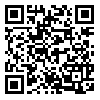Volume 17, Issue 2 (2017)
QJER 2017, 17(2): 145-175 |
Back to browse issues page
Download citation:
BibTeX | RIS | EndNote | Medlars | ProCite | Reference Manager | RefWorks
Send citation to:



BibTeX | RIS | EndNote | Medlars | ProCite | Reference Manager | RefWorks
Send citation to:
Nazari R, Khodaparast Mashhadi M, Seifi A. Analyzing Behavior of Iran in OPEC: an Application of Markov Regime-Switching Models. QJER 2017; 17 (2) :145-175
URL: http://ecor.modares.ac.ir/article-18-12077-en.html
URL: http://ecor.modares.ac.ir/article-18-12077-en.html
1- Ph.D. Candidate of Economics, International Campus, Ferdowsi University of Mashhad
2- Associate Professor of Economics, Faculty of Economics and Business Administration, Ferdowsi University of Mashhad. (Corresponding author)
3- Assistant Professor of Economics, Faculty of Economics and Business Administration, Ferdowsi University of Mashhad
2- Associate Professor of Economics, Faculty of Economics and Business Administration, Ferdowsi University of Mashhad. (Corresponding author)
3- Assistant Professor of Economics, Faculty of Economics and Business Administration, Ferdowsi University of Mashhad
Abstract: (8313 Views)
Scientific study of the major oil producers has always been one of the issues facing economic experts. The emergence of Organization of the petroleum Exporting Countries (OPEC) as a major player in the world oil market resulted in increasing researches on the behavior of OPEC and its members. Iran as the second largest oil producer in OPEC has achieved the special place in shaping the policies of this organization. This paper investigates the behavior of Iran in OPEC using monthly data from 1973:1 to 2015:12. Therefore, first model is estimated using Griffin linear model, and then it is estimated using a Markov Regime-switching method with two states: probability of fixed transition and probability of time-varying transition. The results of fixed transition probability method showed that the behavior of Iran is nonlinear; and collusion regime is the most common behavior for Iran, so that the chance of staying in competitive regime is 0.005 percent. In other words, over the period under study, Iranian behavior within organization has been frequently consistent with other members based on agreement and collusion and cartel-like rules. However, the findings of the time-varying transition probability method have not clearly determined factors affecting non-linear effects on the production behavior of Iran.
Received: 2016/08/14 | Accepted: 2016/12/18 | Published: 2017/06/22
| Rights and permissions | |
 |
This work is licensed under a Creative Commons Attribution-NonCommercial 4.0 International License. |







